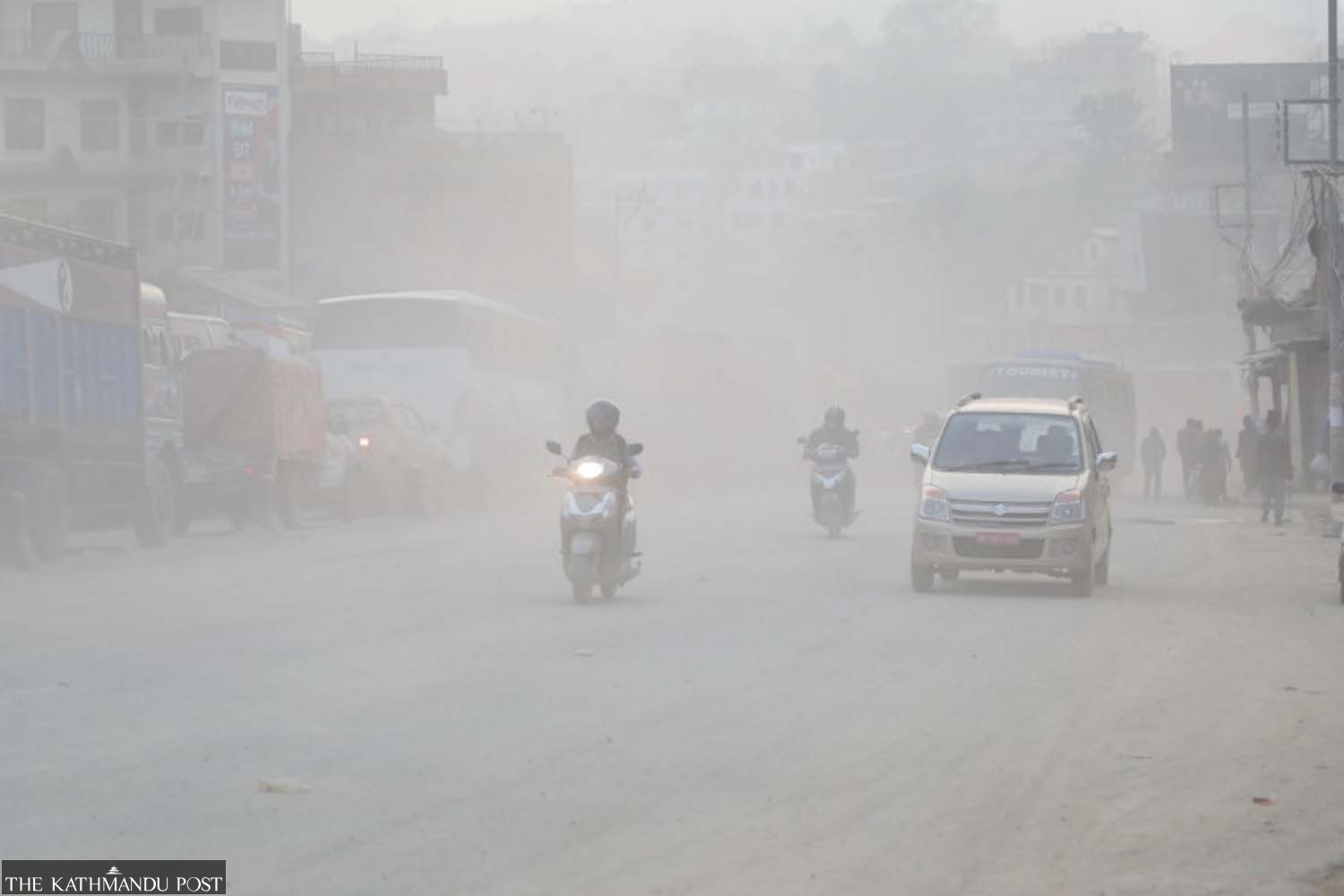A 32-year-old man from Kapilvastu district was admitted to Tribhuvan University Hospital on Friday due to complications from severe pulmonary pneumonia. Due to a tuberculosis infection, both of the patient’s lungs were severely damaged.

“This man is a regular patient at our hospital as he frequently requires oxygen therapy,” said Dr. Niraj Bam, associate professor at the Institute of Medicine. “This patient stays more in the hospital than at home due to lung problems. These patients are thousands in number all over the country.
According to a new study, Nepal had the highest age-standardized death rates in the world for chronic lung diseases caused by air pollution in 2019: 182.5 per 100,000 people, with 3,318, 4 years lost due to illness or disability.
The age-standardized mortality rate indicates the number of deaths per 100,000 people of the average population, when the age structure is kept unchanged by calculation during the entire reference period.
High prevalence of lung disease is not uncommon in Nepal. The report’s findings also come as no surprise to experts, as various studies conducted in the past have indicated that lung disease is the number one cause of death in the country.
“What is concerning is that the problems have not diminished despite knowing its burden on society,” said Dr Megnath Dhimal, chief researcher at the Nepal Health Research Council.
The prevalence of chronic obstructive pulmonary disease (COPD) has exceeded all non-communicable diseases – coronary heart disease, diabetes and kidney disease – in the country, according to a study carried out by the council in the past.
Similarly, chronic obstructive pulmonary disease was responsible for 16.3% of total deaths in 2019, up from 6.1% in 1990.
Almost all cases of COPD are of environmental origin, said Jay Kaufman, study author and professor in the Department of Epidemiology, Biostatistics and Occupational Health and McGill University in Montreal, Canada, quoted by SciDev.Net.
Smoking, indoor air pollution from cooking, heating, outdoor air pollution, infections – tuberculosis, childhood pneumonia and lung cancer are considered reasons for the high prevalence of COPD in the country.
Doctors say young people are also suffering from COPD and the problems have increased in rural areas and big cities.
“The high prevalence rate of COPD in rural areas is understandable as people use firewood for cooking,” said Dr Aashes Dhungana, a pulmonologist at Bir Hospital. “But the number of COPD patients is not less in big cities. Even children and young people suffer from this problem.
In March, mist blanketed the Kathmandu Valley and air quality reached unhealthy levels. Environmentalists have blamed open burning activities and wildfires across the country for the rising level of air pollution.
The level of pollution had also worsened in 2021. The authorities concerned had issued a red alert and imposed the closure of schools to mitigate the adverse effects of increasing air pollution on the health of students.
IQAir, a Swiss group that collects air quality data around the world, ranked Nepal among the top 10 countries with the worst air quality in 2021.
Emissions from vehicles and brick kilns are considered the major contributors to air pollution in the country.
The population-based prevalence of selected chronic non-communicable diseases in Nepal, conducted by the Nepal Health Research Council in 2019, showed that 25.1% of the population of Karnali region, or one in four people, suffers from chronic obstructive pulmonary disease, the highest. number in the country.
The study showed that 16.4% of the total population, or one in six people, in Madhesh province; 14.3% – one in seven people – in Sudurpaschim province; 11.7% – one in nine people – in Bagmati province; 9.5% – one in 10 people – in Lumbini province; 6.2%—one in 16 people—in Province 1; and 6% – one in 16 people – in Gandaki province suffer from chronic obstructive pulmonary disease.
The study showed that more than three million people across the country suffer from respiratory problems, but only three percent receive proper treatment.
“Some of the patients are coming to the hospital at a critical stage and we have to admit them to the intensive care unit,” said Dr Hem Raj Paneru, senior consultant intensivist at HAMS Hospital.
Doctors say that due to the lack of a proper case management system or timely medical intervention in the country, many COPD sufferers have been denied treatment.
Ministry of Health and Population officials acknowledge the lack of appropriate and timely medical interventions, but say many steps have been taken to reduce the disease burden.
“We have tried to address issues through the core non-communicable disease cluster,” said Dr Phanindra Baral, head of the non-communication section in the Division of Epidemiology and Disease Control. “Some COPD drugs have been included in the list of free drugs. Measures are also taken to reduce indoor air pollution, awareness is raised to reduce tobacco use and environmental pollution.
The study pointed to behavioral risk factors such as smoking as the main reason for the increase in the number of patients with chronic obstructive pulmonary disease.
The deteriorating air quality of Kathmandu Valley is also believed to be one of the reasons for a sharp increase in respiratory problems with severity in patients infected with the coronavirus, according to doctors.
They say the prevalence of chronic obstructive pulmonary disease can be reduced by changing behaviors, such as discouraging tobacco and firewood use in rural areas and implementing effective measures to reduce air pollution. air in cities.
“Multiple factors including bacterial, viral and behavioral are responsible for the increase in COPD cases and it is not just in Nepal but all over the world,” said Dahal, a pulmonologist. “What concerns us is that the measures taken to alleviate the problems in our country have not yet shown positive results.”

